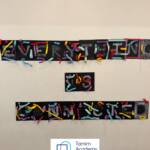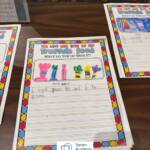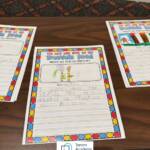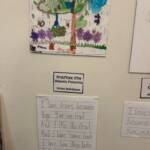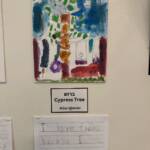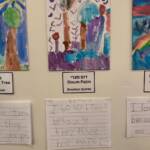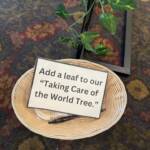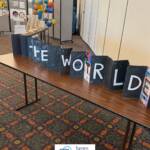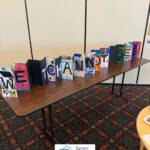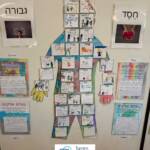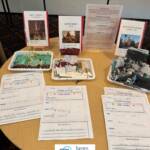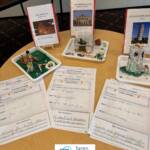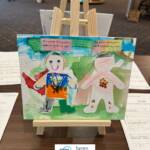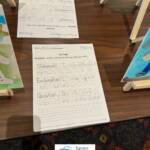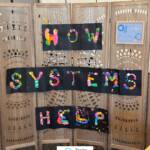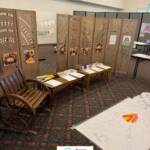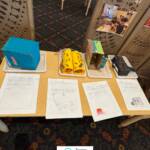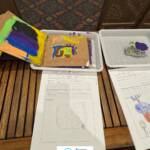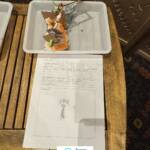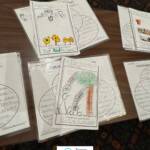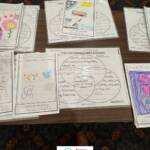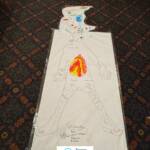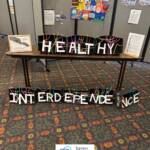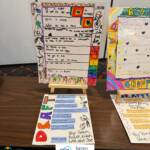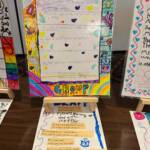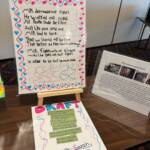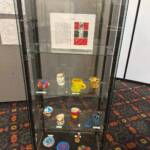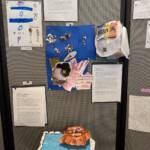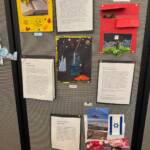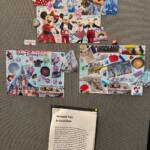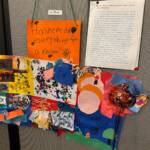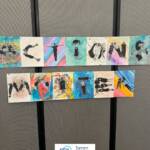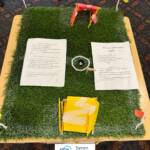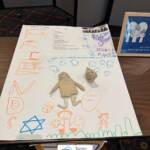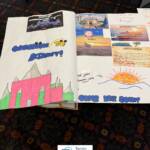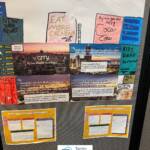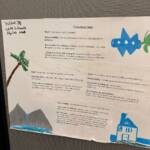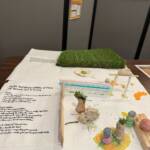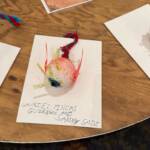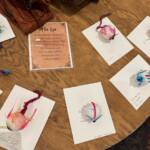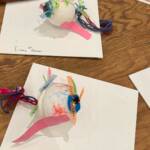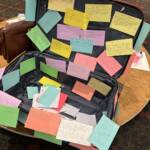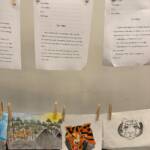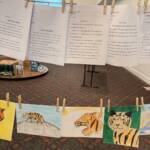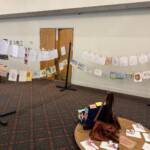Exhibition 2025
Kindergarten
Kindergarten’s exhibition, Everything is Connected, showcased the students’ exploration of biomes, trees, and the responsibility to care for the world. The class studied four types of biomes—desert, rainforest, woodlands, and chilly tundra—and brought them to life through detailed dioramas. They also learned about different trees found in the biomes of Israel, and each student selected one to illustrate, using watercolor techniques inspired by Claude Monet.
Connecting learning to Jewish values, the class revisited the story of Creation and discussed their role in protecting the world, guided by the phrase L’avdah U’leshamrah—to work and protect the land. The students created a “Taking Care of Our World Tree,” adding leaves with ideas on how to care for the environment.
Additionally, after reading The Lorax, the students reflected on the story’s message and wrote about the Truffula Tree, deepening their understanding of conservation. Through art, writing, and hands-on projects, their display highlighted both the beauty of nature and our role in preserving it.
First Grade
Our first graders took a deep dive into discovery through The World We Cannot See exhibition. They explored both the visible and invisible aspects of our world, noticing details in their surroundings and exploring what makes them unique. They also practiced different types of sentences to express their thoughts and wonders.
Students reflected on big ideas like Hashem and their neshamot through hands-on exploration and creative expression.
As part of their study of Europe, they researched famous landmarks, planned their projects using blueprints and material lists, and built detailed models, describing their work in expanded sentences.
These experiences gave our students the chance to explore, express themselves, and collaborate—growing both as learners and as individuals.
Second Grade
How Systems Help
Second grade put so much effort into their incredible exhibition projects! They crafted thoughtful expository writing pieces comparing what the nefesh habahamit, nefesh elokit, and plants need to grow and thrive, bringing their ideas to life with a beautiful art display.
They also wrote powerful, realistic fiction stories about each shalit al halve, exploring their own struggles with self-control. On top of that, they stepped into the role of inventors, imagining and designing their own creations for the future!
Third Grade
Healthy Interdependence was the theme of our third graders’ exhibition, where they explored the connections between people, places, and faith.
Through the study of Peru, Nigeria, and China, students examined geography, history, culture, and artifacts, gaining a deeper appreciation for the ways communities interact and influence one another. They also explored good citizenship by studying the civil rights movement, writing and performing original poems inspired by their learning.
In science, students created a life-size DNA strand, connecting genetic traits to our Judaic faith. Their exploration of interdependence continued with the concepts of Emunah (belief), Bitachon (faith), and Hashgacha Protis (Divine Intervention). Through stories and song, they reflected on how Hashem is present in their lives. Each student wrote a personal story about seeing Hashem’s hand in their own experiences and brought their reflections to life through a multi-media collage.
Fourth/Fifth Grade
Actions Matter was the theme of our fourth and fifth graders’ exhibition, where they explored the impact of rights, responsibilities, and personal growth.
Through their study of Jewish Law and American Law, students discovered the many ways these systems align. They created projects that connected rights and responsibilities in different settings—at home, in school, and even at a sports game—to both Jewish mitzvot and American laws. For example, they examined how the First Amendment grants the right to assemble at a sports game, while the mitzvah of kindness encourages good sportsmanship.
Literature played a key role in their learning as well. After reading Tiger Rising, students wrote their own endings to the novel and reflected on the themes of power and fear—both in the story and in their own lives.
In science, they explored one of our most important senses: vision. After studying the structure and function of the human eye, students built models to demonstrate their understanding.
Through these experiences, our fourth and fifth graders saw firsthand how actions—both big and small—truly matter.
With creativity, collaboration, and critical thinking, our third graders uncovered the many ways we are all connected—through history, culture, faith, and one another.

